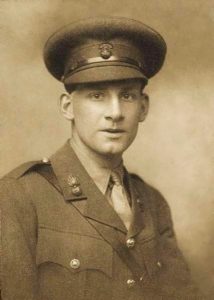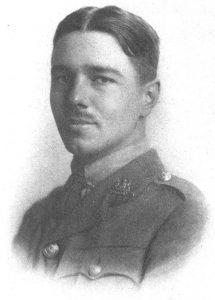Today news articles bring us a meeting between two poets that changed the course of literary history and we see how science and religion are working together to uncover some long-lost poetry.
When Owen Met Sassoon – One Hundred Years Ago
In Edinburgh, just over 100 years ago Wilfred Owen and Siegfried Sassoon, both English poets and decorated war heroes met for the first time. They had both been invalided out of the tr enches on the Western Front. Owen was suffering from severe shell shock whilst Sassoon, who had protested the war, was thought to be mentally ill.
enches on the Western Front. Owen was suffering from severe shell shock whilst Sassoon, who had protested the war, was thought to be mentally ill. 
This was a meeting that had a major impact on the course of literary history; it was Sassoon who encouraged Owen to write the kind of poetry that was full of realism and that would go on to inspire future generations of writers. When they met Sassoon, the older man, was already a published poet and a decorated war hero, Owen who was much younger had been teaching in France before joining the army.
Finding himself in the same hospital as Sassoon, Owen approached him to ask about his poetry, encouraged by the friendship that grew between then, and by the doctor who was caring for both men Owen began to write more poetry of his own; in many ways, it served as a therapy for all he had suffered in the trenches. When they were discharged from hospital Sassoon was posted to Palestine and Owen was sent back to the trenches. He died in action a week before the Armistice on November 11th 1918, and his poetry was published posthumously earning him immortality in the literary world.
Invisible Poems
Something truly amazing is occurring in the world of poetry and it is all thanks to a new scientific technique that is being used to reveal traces of old languages that have been all but erased from ancient parchments.
For centuries, these parchments have been gathering dust on the shelves of the library at Saint Catherine’s Monastery on the Sinai Peninsula, but now thanks to this new technique some of the carefully stored works in the 1,500-year-old monastery are giving up the secrets that it was feared had been lost for ever. The ancient parchments, including as many as 160 palimpsests – that is manuscripts that had previously been used before and bear only the faint scratches and flecks of ink underneath the more recent writing. These faint markings are all that remain of the words, many of which had been written in long forgotten languages, that were scraped away sometime between the 8th and 12th centuries by the monks so they could reuse the parchments.
Not only is this unlikely collaboration between an orthodox wing of the church and modern scientific techniques uncovering new vocabulary from languages that haven’t been used for centuries but also over 108 pages of Greek poetry that was previously unknown. This poetry was uncovered beneath layers of more recent Arabic and Georgian texts. Medical treatises, including one containing the oldest known recipe accredited to Hippocrates have also been uncovered.
The technique involves photographing the parchment from multiple angles using different colours of light, in a specialised technique.


You must register to comment. Log in or Register.